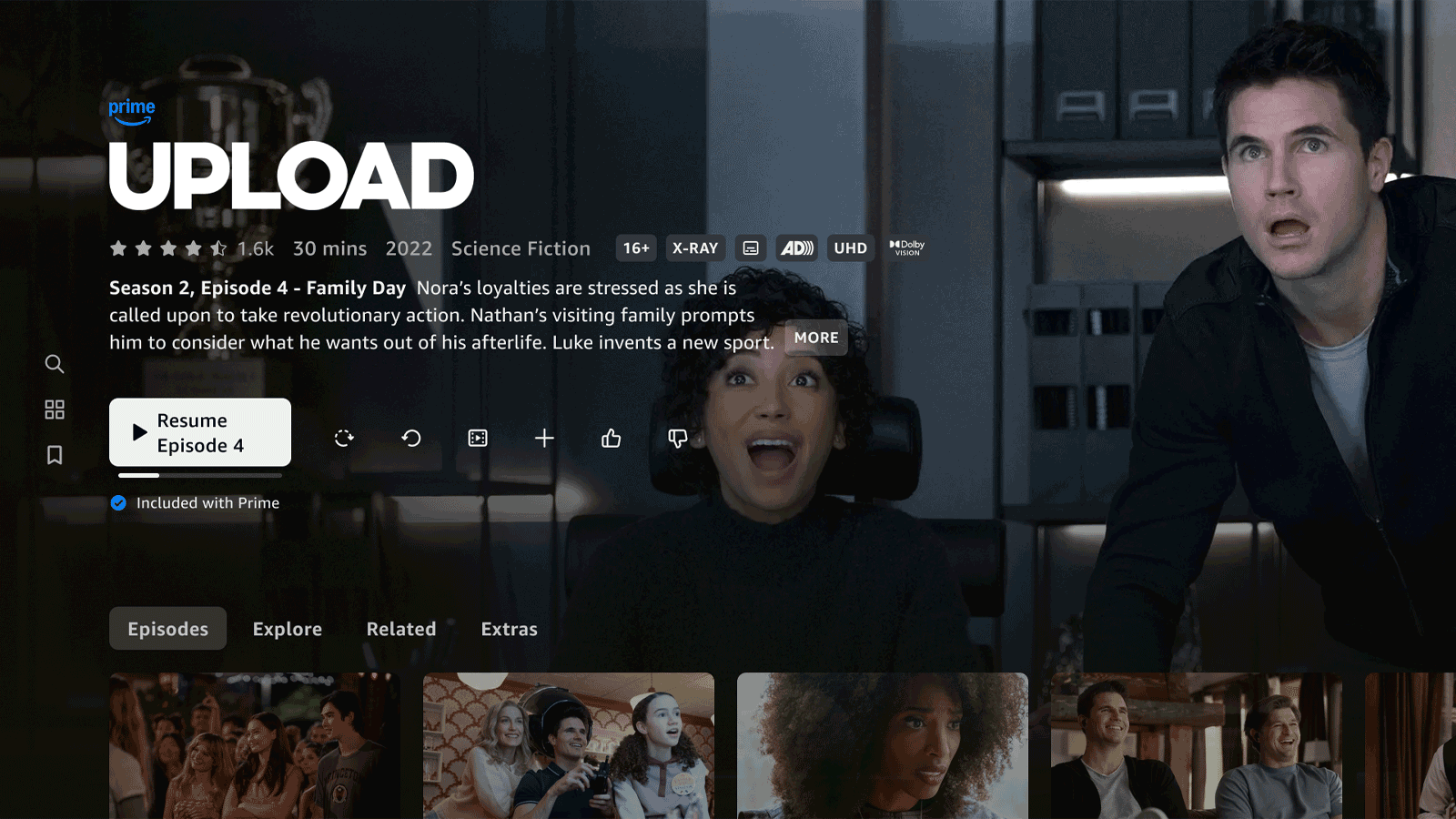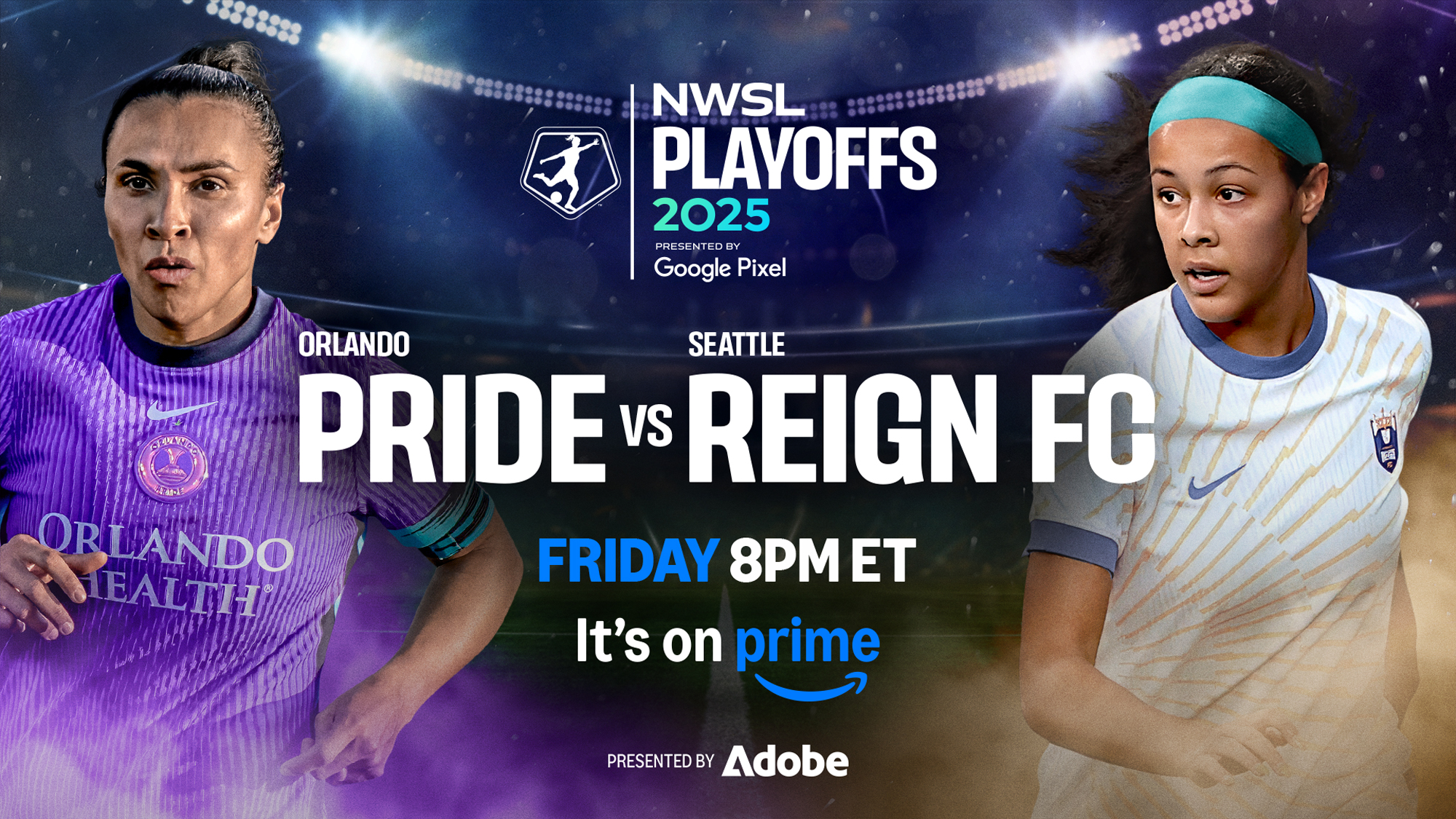Page overview
Boosting the volume of dialogue
Anyone who has struggled to parse out the words being said on TV knows that turning up the volume doesn’t necessarily make this easier. Sound effects, background music, and other ambient sounds get louder, too, and continue to drown out what’s being said. That’s where Dialogue Boost comes in. It doesn’t simply amplify every spoken line: It uses AI to analyze the original audio in a movie or series and intelligently identify points where dialogue may be hard to hear. Then, it isolates speech patterns and enhances the audio to make sure you catch every word.
Customers can select Dialogue Boost through the audio and subtitle menu. This feature is exclusive to Prime Video, and available in English, Spanish, French, Italian, German, Portuguese, and Hindi. Customers can turn on Dialogue Boost on any device they use to watch our content, without needing any additional equipment.
Audio Description, a form of narration that describes the key visual elements of a video, makes cinematic content more accessible to our blind and visually impaired customers. The use of AI brings us closer to a world where audio description tracks are as commonly available as captions, and has helped Prime Video create the largest library of audio descriptions in the US. AI identifies any gaps in the dialogue, which helps our production teams build audio description scripts faster.

Personalization has always been a hallmark of Prime Video. Now, it’s getting a major upgrade thanks to generative AI. Going beyond homing in on which genres you like best, AI is able to pinpoint movies and shows that have similar plot points and character arcs to your favorite picks, making suggested content more relevant to your specific tastes.
To power this experience, Prime Video uses Amazon Bedrock, a fully managed service from Amazon Web Services (AWS) for building and scaling generative AI applications with foundational models. You can see this in action in “Made for You” collections. Rather than letting you get lost scrolling through content, Prime Video simplifies things by grouping titles tailored to your interests.

Have you ever waited so long for the next season of a TV show that you can’t remember what’s going on when it finally premieres? Or ducked out of the room for a popcorn refill, only to miss a crucial plot point? We’ve all been there. And while your initial instinct may be to rewind or search online for a summary, this approach is inconvenient and takes you away from the streaming experience. You also run the risk of encountering a spoiler or re-watching parts you’ve already seen.
X-Ray Recaps is a generative AI-powered feature that creates brief, easy-to-digest summaries of full seasons of TV shows, single episodes, and even pieces of episodes, all personalized down to the exact minute of where you are watching. Whether you're a few minutes into a new episode, halfway through a season, or took a break from watching a series and need a refresher, X-Ray Recaps delivers short textual snippets of key cliffhangers, character-driven plot points, and other details that can be accessed at any point in your viewing experience.
Utilizing a combination of Amazon Bedrock models and custom AI models trained on Amazon SageMaker, X-Ray Recaps analyzes various video segments, combined with subtitles or dialogue, to generate detailed descriptions of key events, places, times, and conversations. Guardrails are also applied to ensure the generation of spoiler-free and concise summaries.

Prime Video’s Thursday Night Football (TNF) is pioneering the integration of AI into the presentation of live sports. Continually developed through a unique collaboration of TNF producers, engineers, former NFL players, and Prime Video Sports’ AI and Computer Vision team, a growing set of proprietary “Prime Insights” highlight key players, illuminate hidden aspects of the game, and forecast pivotal moments before they happen. Breakthrough features like Defensive Alerts (pictured above) enhance the viewing experience by tracking defensive players before the snap, and identifying “players of interest” in real time that are likely to rush the quarterback.












